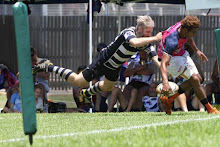Where the Wild Things Were.
Once upon a time, a long long time ago, there were fairy stories designed to tell a moral ‘truth’. Perhaps this style of moralising in children’s stories has gone out of style. Roald Dahl changed people’s perceptions of the fairy tale moral with his Revolting Rhymes. Also the perennial villain of the fairy story, the stepmother has become much more common and much less the villain. Fairy tales and folk stories have always changed, there is no right or wrong version so if you want to change them to your own ends, there is no author to tell you that you can’t.
But if the frightening message is taken out of the fairy tale, where has the moral of the story gone? Well the modern equivalent is the educational story. These stories tend to bring modern social issues into play, Bob Graham’s father figures have ponytails and earrings. Other authors talk about divorce or death in ways that make them great for children who are experiencing these turmoils in their lives. Familiar characters take on new roles Bernstain Bears and the Bully to take one example. These true to life books are designed to children through the stages of psychological growth. By reading about these characters and their bravery in the face of adversity, children gain strategies for dealing with anger, separation from their parents and so on. The similarity between these tales and fairy tales is that the kids don’t always realise that there is a message for them in the story which can allow you to ease them into an issue rather than confront them head on.
It seems that at the moment there is a trend towards this level of reality in children’s fiction but at the same time there is a trend to ‘soften’ traditional fairy stories. Fairy stories and folk tales have as many different versions as there are tellers of stories. So whether Chicken Licken gets eaten is entirely up to you. The same is true of the three little pigs, Goldilocks and so on. One modern rewriting involves stepmothers, once upon a time one could discuss the sins committed by parents by having step parents commit these crimes. Now however stepparents are common enough to make this a problem. After all we don’t want kids to believe that their new stepmother is going to abandon them in the woods. Oh and a big hi to my own stepmother if she’s reading this.
Are fairy tales then, being replaced with a politically correct collection of stories in which kids have two dads or where daycare is the accepted norm? Well yes, but don’t let that put you off the traditional tales. The fantastic thing about Red Riding Hood and her kin is that there is no author around to claim you are changing their work. You can tell red riding hood anyway you want.
Grandma gets eaten
Grandma gets stuffed in the cupboard
Red Riding Hood gets eaten
Red Riding Hood is rescued by a woodcutter
Red Riding Hood is rescued by her father
The woodcutter cuts grandma out of the wolf (and she’s OK)
The wolf escapes (but is never heard of again)
You get the idea, there is no right nor wrong way of telling the story. So why are there so many different ways? Just like our modern tales there is a lesson to be learned. For Red Riding Hood it is don’t talk to strangers. Some people however want to give different morals so the text is changed. Should the wolf/stranger be killed? Where do you stand on capital punishment? These folk tales can prepare children for the things they might face just as more modern stories do.
So once you decide what stories you want to read to the kids, all you have to do is decide how you are going to read them.
For those of you who attend storytime either here or elsewhere you will by now have noticed that there are many vastly different styles of storytelling. If the staff we have here at the Library can present so many different styles of story, think about the vastly different styles parents may have. The great thing about reading for children is that there is no such thing as the wrong style. A quiet reader forces the children to draw closer and listen carefully, a slow reader gives the children a chance to think about each point and perhaps to appreciate the fantastic illustrations that so many children’s books have. Louder (stop looking at me like that) or faster paced storytellers may build excitement and enthusiasm in their audience and so on. And whatever you want to read, traditional, modern, moralizing or just beautiful and full of fairies, the staff at your local public library are more than willing to help you in your search for the perfect kids book for your kids.

No comments:
Post a Comment